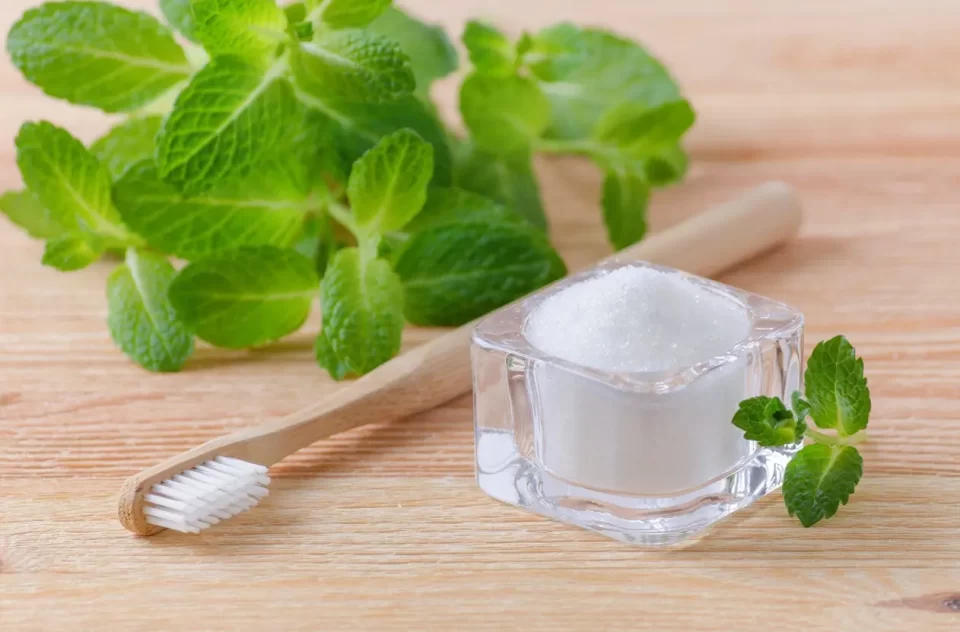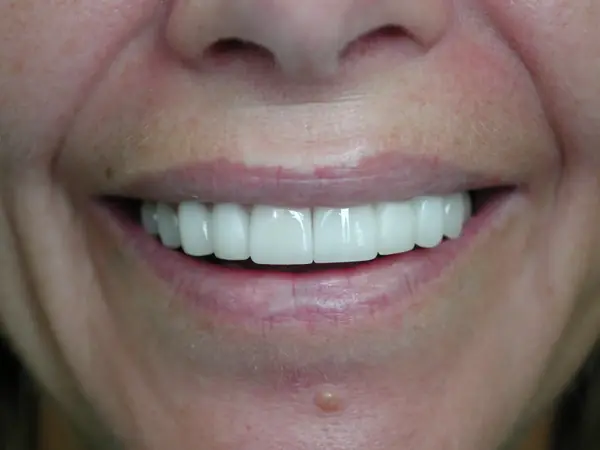Small changes at the dentist add up fast. Holistic dentistry blends modern care with eco-friendly habits that protect your health and the environment at the same time. Expect BPA-free sealants, biocompatible materials, digital X-rays with lower radiation, and smart water management that saves thousands of gallons a year. Add high-efficiency HVAC, renewable power, and take-back programs for metals and tools, and you’ve got a clinic that cares beyond the chair.
For you, that means gentler treatments and less exposure to questionable chemicals. For the planet, it means cleaner air, cleaner water, and less waste from every appointment from each visit.
How Do Holistic Dental Practices Reduce Environmental Waste?
A “green” approach starts with a simple question: what can we safely refuse, reduce, reuse, or redesign? Infection control is non-negotiable, of course. But within those guardrails, there’s surprising room to move.
Less in, less out:
- Digital everything.
Going paperless with electronic health records, digital forms, and e-signatures slashes paper use, toner, and storage. Digital X-rays and 3D scans replace chemical developers and film packets that used to head toward landfills. - Smart sterilization workflows.
Replacing single-use where clinically appropriate with properly sterilized reusables (e.g., stainless steel suction tips, metal impression trays) dramatically cuts plastic waste. Modern steam autoclaves are efficient and safe—and when paired with smart cassettes, they reduce wrap and pouch use, too. - Biodegradable and compostable disposables (where it makes sense).
Plant-based saliva ejector tips, paper barrier sleeves, and biodegradable patient bibs can shrink the trash bag without compromising cleanliness. - High-efficiency dry vacuums.
Switching from water-ring pumps to dry vacuum systems reduces water consumption by thousands of gallons per year and lowers electricity use. - Bulk + local.
Buying in bulk reduces packaging; sourcing from local labs and suppliers shortens shipping routes (and carbon miles) while strengthening community economies. - Teledentistry triage.
Quick virtual consults for post-op questions or minor concerns save a car trip, time off work, and a surprising amount of clinic throughput waste (gloves, barriers, wipes) for cases that don’t actually need a chair.
Waste segregation is not boring—it’s decisive.
A practice that trains its team to separate recyclables, sharps, amalgam scrap, lead foil (if any remains), and confidential materials prevents cross-contamination and keeps reclaimable material out of the trash. It’s not glamorous, but it’s a real lever.
What are Eco Friendly Materials Used in Holistic Dentistry?
Holistic dentistry isn’t anti-materials; it’s pro-appropriate materials—biocompatible, durable, and selected with a “first, do no harm” lens.
- Ceramic and zirconia restorations.
These metal-free options are strong, highly aesthetic, and inert. In the right indications, zirconia and lithium disilicate (glass-ceramic) offer longevity with minimal re-treatment—fewer replacements mean less material, less time, less energy over a lifetime. - Modern resin composites with mindful chemistry.
Contemporary composites have improved filler systems and curing profiles. A holistic approach looks for low-residual monomer systems, employs meticulous rubber-dam isolation (for both patient and clinician exposure), and cures with calibrated lights to minimize incomplete polymerization. - Cement and bonding agents selected for biocompatibility.
Resin-modified glass ionomers and bioactive cements can support dentin remineralization in specific scenarios. The guiding principle: pick the least reactive material that does the job well. - Nontoxic prevention tools.
- Nano-hydroxyapatite toothpastes to support enamel repair.
- Xylitol gum to starve acid-making bacteria and stimulate saliva.
- Neutral pH rinses that minimize harsh antiseptics for everyday use while reserving stronger agents for short, targeted intervals.
- Nano-hydroxyapatite toothpastes to support enamel repair.
- Surgical + periodontal care with gentler adjuncts.
Use of sterile saline, ozonated water (where indicated), and ultrasonic debridement reduces chemical load. Laser therapies (case-dependent) can decontaminate pockets while lowering reliance on systemic medications. - Mercury-free restorative protocols.
Choosing ceramic, composite, or gold (in limited indications) avoids mercury content altogether—more on that below.
Remember, “eco-friendly” doesn’t mean “forever.” Materials still require energy to mine, refine, ship, and place. The most sustainable restoration is the one you don’t need because prevention won.
Is There a Link Between Mercury Fillings and Environmental Pollution?
This is where dentistry’s past and the planet’s future intersect. Dental amalgam has been used for generations; it’s durable, familiar, and contains elemental mercury bound within an alloy. In the mouth, properly placed amalgam is considered stable by many regulatory bodies. The environmental conversation, however, focuses on what happens outside the mouth during placement, removal, and disposal.
- Wastewater pathways.
Without the right capture systems, tiny particles from drilling can enter wastewater. That’s why responsible practices install amalgam separators and follow strict collection and disposal protocols, sending captured material to licensed recyclers rather than municipal systems. - Air pathways.
During removal, heat from drilling can release tiny vapor amounts; high-volume suction, copious water irrigation, rubber dams, and room filtration dramatically reduce exposure. From an environmental standpoint, capturing debris and vapor is about keeping mercury out of air and water streams. - End-of-life pathways.
Community-level policies (like separator mandates) and conscientious crematoria/medical waste handling are part of the bigger picture. The global movement to phase down mercury use reflects a shared goal which is less environmental mercury overall.
Our take as a holistic, prevention-first practice:
- We do not place new amalgam.
- We remove existing amalgam when it’s clinically indicated (cracks, recurrent decay, marginal failure)—not as a reflex.
- When removal is appropriate, we follow protective, high-capture protocols to respect both patient health and the environment.
The planet and your body benefit most when we prevent decay, preserve natural tooth structure, and keep hazardous materials out of the waste stream altogether.
What Makes a Dental Office Considered Green or Sustainable?
“Green” isn’t a plant in the lobby and a recycling bin. It’s a system—policies, equipment, and culture that continually push toward lighter footprints and healthier bodies.
Core pillars of a truly sustainable dental practice:
- Energy + Water Stewardship
- LED lighting, occupancy sensors, and ENERGY STAR-rated equipment
- Dry vacuum systems, smart sterilizer cycles, and low-flow fixtures
- On-site air purification with HEPA and activated carbon filtration (health benefit + reduced chemical usage)
- Air + Chemical Quality
- Switching to neutral pH or hydrogen-peroxide–based cleaners where appropriate
- Strict ventilation standards for any materials that off-gas
- Cold sterilants used judiciously with staff PPE and proper disposal—no shortcuts, ever
- Materials + Waste
- Amalgam separators, sharp management, and responsible recycling partners
- Preference for reusables (clinical gowns, instrument cassettes, metal suction tips) when safe and feasible
- Compostable/biodegradable options for non-critical disposables
- Prevention-First Clinical Philosophy
- Saliva testing, dietary coaching, sealants, fluoride/nHAp varnishes, and remineralization protocols
- Bite guards for grinders (protecting restorations = fewer remakes = less waste)
- Risk-based recall intervals so appointments are meaningful, not mindless
- Supply Chain + Community
- Local dental labs with transparent practices
- Bulk orders with minimal packaging and consolidated shipments
- Community oral-health education (fewer emergencies, fewer high-impact procedures)
- Team Culture + Transparency
- Ongoing training in sustainable protocols
- Publishing an annual “green scorecard” so patients can see what’s working and what we’re improving
Green is a journey, not a certification. The best offices keep iterating: swapping products, tracking energy data, updating equipment, and celebrating small wins (because those are the bricks that build big change).
A Patient’s Mini-Guide to a Greener Home Routine
You’re part of the ecosystem, too. A few low-effort shifts amplify everything we do in the clinic:
- Choose a soft bristle brush and replace heads instead of full handles (or go manual with bamboo).
- Try a water flosser if string floss isn’t your friend; cleaner gums = fewer procedures.
- Park toothpaste (fluoride or nano-hydroxyapatite) for 1 minute on sensitive areas before brushing—fewer cringes, happier enamel.
- Keep a small recycling bin near the bathroom; lots of packaging is recyclable when clean and dry.
- Space out acidic snacks and use xylitol gum after meals to neutralize pH naturally.
- Book preventive visits on time—nothing saves materials like a cavity that never happens.
Eco-Friendly Smiles, Healthier You — Holistic Dentistry That Cares for the Planet and Your Body
Your healthiest smile can be eco-friendly. We’ve shown how biocompatible materials, low-waste protocols, and smart water and energy choices protect you and the environment. At Jaline Boccuzzi Dentistry, we put these practices to work every day, so your checkup supports your whole-body wellness and a cleaner community.
Ready for care that feels good and does good? Book with us for a personalized, mercury-free plan, digital imaging with less exposure, and a transparent “green” approach you can trust. Let’s build a resilient smile and a lighter footprint together.

